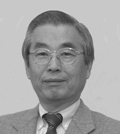213th ECS Meeting | Phoenix, AZ | May 19, 2008

Single-walled Carbon Nanotubes: Synthesis, Modification and Characterizations
Single-walled Carbon Nanotubes: Synthesis, Modification and Characterizations
Unique properties of CNTs depend on their structures and morphologies, and well-controlled specimens (diameter, length, quantity, chirality, structural perfection, impurity, homogeneity) will be needed for precise and reliable experiments. It is also required for their industrial applications. Regarding the production of well-controlled single-wall carbon nanotube (SWCNT), two important breakthroughs in SWCNT growth were made in Prof. Ijima’s group at AIST. One is a direct injection pyrolytic synthesis (DIPS) method, which can provide controlled tube diameters and extremely high purity tubes on the industrial scale production. Some industrial applications of the product are for transparent and flexible conductive films, thin film transistors, SWCNT threads and sheets. Another is the “Super-Growth” of SWCNTs, which grow vertically on various substrates including metal foils of “A4 size.” Thus produced, substantially cheap SWCNTs are used for high power density capacitors. The importance of characterization of nanostructured materials will be demonstrated by showing the latest results of atomic structures of CNTs and their related structures, which have been revealed by an ultra-high resolution TEM with a spherical aberration corrector. Individual carbon atoms, local atomic defects of SWCNTs, and individual fullerene molecules were directly recorded. Dynamic behaviors of those atoms and defects as well as doped metal atoms and organic molecules inside the tubes are of interest in terms of sophisticated device application of CNTs.
Sumio Iijima currently holds three professional titles: Professor, Meijo University, Nagoya since 1999; Director, Research Center for Advanced Carbon Materials, National Institute of Advanced Industrial Science and Technology, Tsukuba since 2002; and Special Research Fellow of NEC, Nagoya, Japan. He graduated from the University of Electro-Communication in Tokyo in 1963, and received his PhD degree in physics from Tohoku University in 1969. He worked in Prof. J. M. Cowley’s group at Arizona State University, first as a postdoctoral fellow from 1970 to 1976, and then as a senior research associate until 1982. During this period he worked briefly at Cambridge University as a visiting scholar in 1979. At Arizona he devoted much time to developing high-resolution transmission electron microscopy (HRTEM), which is the basis of the current HRTEM method. His work was recognized with the Eugene Warren Diffraction Physics Award from the American Crystallography Association in 1976.
Prof. Iijima returned to Japan in 1982 to work in the Ultra-Fine Particles Project (JST, Japanese government research agency) for 5 years and won the Nishina Memorial Award (for the discovery of structural instability of gold clusters, 1985). He joined the NEC Fundamental Research Laboratories in Tsukuba as a research fellow in 1987. In 1991, Prof. Iijima discovered carbon nanotubes and elucidated that carbon nanotubes are composed of concentric graphene tubes and have the helical atomic arrangement. In 1993, Iijima showed that single-wall nanotubes could be synthesized by a dc arc-discharge of carbon with co-existing metal catalysts. His discovery of carbon nanotubes opened up a new era of nanoscience and nanotechnology and attracted many researchers in a wide range of fields from academia to industry.
Some of Prof. Iijima’s awards are as follows: the Agilent Europhysics Prize (2001), the J. C. McGroddy Prize, APS (2002), the Japan Academy Award and Imperial Award (2002), Person of Cultural Merits, Japanese government (2003), and the ACS Medal of Achievement in Carbon Science and Technology (2004). He also received the Gregori Aminoff Prize in Crystallography (Royal Swedish Academy of Science, 2007), the Fujiwara Award (2007), and the Balzan Prize for Nanoscience (Italy-Switzerland, 2007). He is a fellow of APS (2001) and received the Doctor Honoris Causa from the University of Antwerp (2002), EPF Lausanne (2003), and Peking University (2005). In 2007, he was elected as the foreign associate of the National Academy of Science. Professor Iijima is also the 2008 recipient of the Fullerenes, Nanotubes, and Carbon Nanostructures Division Richard E. Smalley Research Award.

